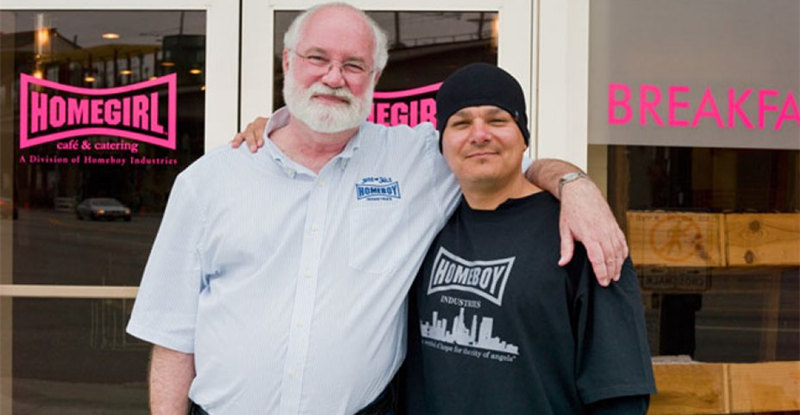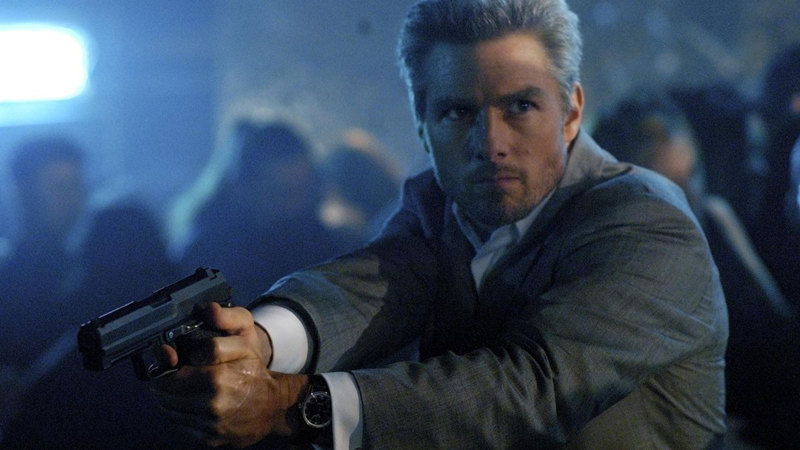Except for a dog and a vulture, the animals in “Home on the Range” look nothing like Disney characters, drawn in a more angular style and with harsher details. And the overall look of the backgrounds and figures comes closer to what we think of when we think of Warner Bros. animation. In fact, an old lady looks as if she could be carrying a birdcage with Tweety in it.
Yet, “Home on the Range” is indeed a Disney movie, created with a budget of over $100 million and disappointing people on 3047 theatrical screens when it opened in April of 2004. I had never seen it, so after the opening credits when the writing seemed sharp enough, I wondered if it deserved better than the ratings I’ve seen.
But the more I watched, the more I knew that this was a mediocre movie—for Disney or anyone. After a time, the animation and the soft palette become liabilities. What’s worse is that the characters themselves are uninteresting. Disney has a history of imparting animal characters with human qualities—one reason why they’re often so darned irresistible, and why audiences find themselves getting emotionally involved with a hand-drawn or computer generated entity that doesn’t exist outside the frame. But the Disney touch is missing here.
Direction isn’t the problem. The story is paced well enough, and Will Finn (“The Road to El Dorado”) and first-time feature director John Sanford have a good enough sense of scenic construction. It’s the animation, the characters, and the concept that fall short. If you ask me, it’s a warning sign for any movie when 18 writers are credited. The result is usually more of a compromise than it is a vision brought to life. And there’s no vision here.
What we get is a tired Saturday morning plot about a farm that’s going to be sold at auction and the animals dispersed if someone doesn’t do something quickly to raise some serious cash. That “someone” turns out to be a cow named Maggie, who’s voiced by Roseanne Barr. Some people (my wife is one of them) find the sound of Rosanne annoying even when she isn’t a sashaying “show cow.”
Maggie talks two other cows (voiced by Judi Dench and Jennifer Tilly) into going to town with her to try to win money at the fair. Instead, they see a reward poster for a desperado and decide that the best and quickest way to get the $750 needed to save Patch of Heaven (funny how a contest or reward is always the exact number a bank wants) is to beat a bounty hunter named Rico (Charles Dennis) to the prize: a yodeling rustler named Slim (Randy Quaid) who’s like the Pied Piper for bovines. His hideout is protected by Junior the Buffalo (Lance LeGault) and a cast of misfits and critters includes the sheriff (Richard Riehle) and his horse, Buck (Cuba Gooding, Jr.).
The talented voice cast includes Steve Buscemi, Patrick Warburton, G.W. Bailey, and Estelle Harris, and the actors give it all they can to try to inject some life into this hackneyed plot and unsympathetic characters. But even their efforts and some lively songs from Alan Menken and Glenn Slater aren’t enough to do the trick—and that includes energetic performances from k.d. lang, Bonnie Raitt, Tim McGraw, Randy Quaid, and The Beu Sisters. It’s still one big “Who cares?” that seems to drag on, despite a slender 76-minute run time.
“Home on the Range” pulled a PG rating because of “brief mild rude humor,” and we can guess that it’s because of lines like one that Maggie speaks when she first meets the other animals: “They’re real,” she says of her udders, “so quit staring.” Every now and then a clever line pops up like a prairie dog looking out of his hole, but then its back into the abyss where mediocre films go. And that’s what “Home on the Range” is. Mediocre. Not awful. But in a way, that’s almost as bad, especially for Disney.
Video:
It’s frankly hard to rate the video because the film is so inconsistent—bright and bold and oversaturated with color in some scenes, and flat as a flapjack and washed out in others. I noticed a few instances of ghosting as a result of the AVC/MPEG-4 transfer, but funnily enough you don’t really notice compression artifacts because so much of the film looks soft. Was it the way it was produced? The result of the transfer? Both? I can’t say, but it’s not one of Disney’s best-looking video presentations.
Audio:
The audio is much better, and a nice showcase for the Menken-Slater tunes. The rear speakers are active, but muted until big, loud scenes—like the encounter with Junior. The low end is solid, though, with the subwoofer asked to carry a load that’s never too heavy. The featured audio is an English DTS-HD MA 5.1, with additional options in French and Spanish Dolby Digital 5.1 and subtitles in English, SDH, French, and Spanish.
Extras:
“Home on the Range” comes with a DVD copy and a bare minimum of bonus features. Directors Finn and Sanford are joined by producer Alice Dewey for a commentary track that’s part lovefest for the film and part deliberate entertainment for the audience. So if you’re looking to discover how they shot a particular scene, you probably won’t find out here.
A standard 17-minute making-of feature provides more information, covering the usual pre-production, production, and post-production bases and including segments on the casting and songs. Then there’s a 10-minute featurette from art director David Cutler and background supervisor Cristy Maltese, who talk about what they intended for the film’s design and how they think it looks, overall. Other than those features, there’s just 15 minutes of deleted scenes, a three-minute animated short (“A Dairy Tale: The Three Little Pigs”), an “Anytime You Need a Friend” music video (The Beu Sisters), a brief learn-to-yodel segment, and “Joke Corral: Herd of Jokes” aimed at little ones who, if they repeat any of them, will drive adults crazy.
Bottom line:
The dismal failure of “Home on the Range” reportedly pushed Disney animation in the direction of CGI. But later marvels like “The Princess and the Frog” prove that traditional animation isn’t the problem. It all comes down to what it often does: a dumb concept, an uninspired plot, and characters we never grow to care about, much less love.


